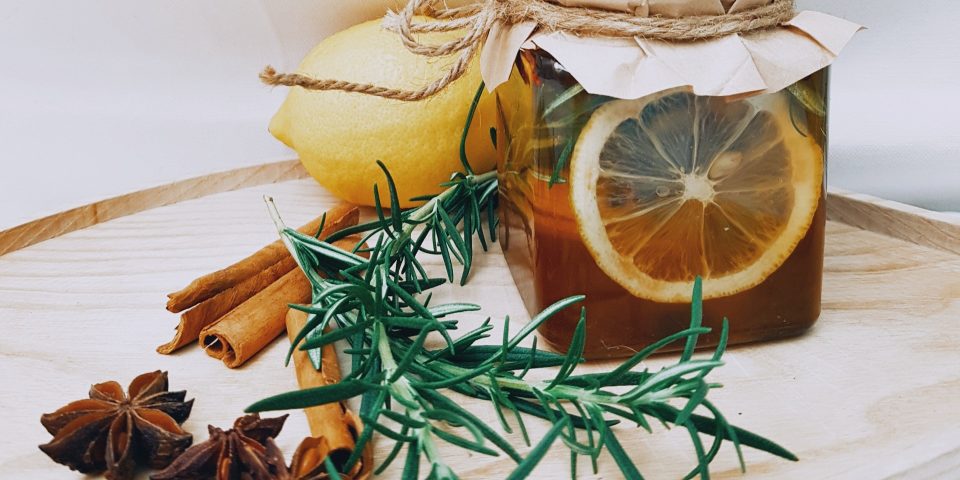Essential Oils Generally Regarded as Safe (GRAS)
“GRAS” is an acronym for the phrase Generally Recognized As Safe. Under sections 201(s) and 409 of the Federal Food, Drug, and Cosmetic Act (the Act), any substance that is intentionally added to food is a food additive (FA), that is subject to premarket review and approval by FDA, unless the substance is generally recognized, among qualified experts, as having been adequately shown to be safe under the conditions of its intended use, or unless the use of the substance is otherwise excepted from the definition of a food additive. See FDA GRAS web page.
The following list includes essential oils and the GRAS status attributed to them. They are divided into three categories. Those that may be taken Internally (small, small doses and highly diluted in water, milk or some other substance that is safe for human consumption), those that are considered to be Food Additives, and those that are considered to be Flavoring Agents. The FDA maintains a database of GRAS substances. This database allows access to opinions and conclusions from 115 SCOGS reports* published between 1972-1980 on the safety of over 370 Generally Recognized As Safe (GRAS) food substances. Always check with the database for the latest updates on essential oils GRAS. Link to FDA GRAS Database.
When taken internally the generally accepted recommendation is ONE DROP for 4 ounces, or more, of a liquid. DO NOT EXCEED THIS DAILY DOSAGE AMOUNT. Do not give to children or seniors. Always check with your healthcare professional before using any oils on these lists.
These statements have not been evaluated by the Food and Drug Administration. The oils and information on this page are not intended to diagnose, treat, cure or prevent any disease.
Essential Oil General Safety Information: If pregnant, nursing, or under a doctor’s care, consult your physician. Information presented here is not meant as a substitute for or alternative to information from health care practitioners, always check with your healthcare professional for any interactions with medications you are taking. “These statements have not been evaluated by the Food and Drug Administration. This product is not intended to diagnose, treat, cure or prevent any disease. Essential Oils (EOs) are highly concentrated extractions of plants and can be harmful if not used carefully. Incorporating EOs into your lifestyle should not cause unnecessary work, but it is important to heed all safety precautions. Never take EOs internally, even if a label say it is safe for consumption by mouth. Never put undiluted EOs directly onto your skin (NEAT) to avoid sensitization of skin, and never apply NEAT to broken skin. Some EOs can cause irritation, sensitization or allergic reactions in some individuals. When using a new oil topically for the first time, perform a skin patch test on a small area of the skin. Some EOs are phototoxic and can cause irritation, inflammation, blistering, redness and/or burning when exposed to UVA rays of the sun. Discontinue using EOs immediately if you encounter any irritation, redness or reaction. Take care when adding EOs directly to bathwater. EOs do not stayed mixed in water, and can, therefore “pool” causing the EO to touch body areas in full strength with the potential for irritation. Some EOs should be avoided during pregnancy or by those with asthma, epilepsy, or other health conditions. Avoid using EOs near the genitals, mouth, nose, eyes and ears. Extreme caution should be used with children and elderly (due to medication mix). Care should be taken when using EOs near animals as not all EOs are safe to use on dogs, cats, birds, horses or other pets. EOs are flammable; keep them away from fire hazards.
Essential Oils Taken by Mouth in Liquid
Adults: 1 drop for minimum 4 oz water, milk, or other liquid
- Alfalfa
- Angelica
- Anise
- Basil
- Bergamot
- Caraway
- Cardamon
- Carrot
- Cassia
- Celery Seed
- Chamomile, G.
- Chamomile, R.
- Citronella
- Clary Sage
- Clove
- Coriander
- Cumin
- Dill
- Fennel
- Geranium
- Ginger
- Grapefruit
- Helichrysum
- Hyssop
- Jasmine
- Laurel (Bay or Sweet Bay)
- Lavandin
- Lemon
- Lemongrass
- Lime
- Mandarin
- Marjoram
- Melissa
- Mountain Savory (Winter Savory)
- Neroli
- Nutmeg
- Orange
- Oregano
- Palmarosa
- Pepper, Black
- Pepper, Pink
- Peppermint
- Petitgrain
- Rose
- Rosehip
- Rosemary Cineol
- Rosemary Verbenon
- Rosewood
- Sage
- Sage Lavender (Spanish Sage)
- Spearmint
- Tangerine
- Tarragon
- Thyme (Thymus vulgaris)
- Thyme linalool (Thymus vulgaris (CT) Linalol (Labiate)
- Thyme, Red (Thymus serpyllum (labiate))
- Ylang Ylang
FDA Approved Flavoring & Food Additives
FL (Flavoring) & FA (Food Additive)
Adults: 1 drop for minimum 4 oz water, milk or other liquid
- Black Spruce
- Cajeput
- Davana
- Elemi
- Eucalyptus
- Fir (Silver Fir, Grand Fir, Fir Needle)
- Fir, Balsam
- Frankincense
- Galbanum
- Myrrh
- Niaouli (Malaleuca Quinquenervia)
- Patchouli
- Rosalina (Melaleuca Ericifolia)
- Sandalwood
- Scotch Pine
- Spruce
- Spruce, Hemlock spruce
- Tea Tree (Malealeuca)
- Valerian
References:
- Aromatica: A Clinical Guide to Essential Oil Therapeutics (Vol. 1 & 2) by Peter Holmes LAc, MH
- Reference Guide for Essential Oils by Connie and Alan Higley
- The Encyclopedia of Essential Oils by Julia Lawless
- FDA information about GRAS – https://www.fda.gov/food/food-ingredients-packaging/generally-recognized-safe-gras
- FDA Database for GRAS – https://www.cfsanappsexternal.fda.gov/scripts/fdcc/?set=SCOGS
Grace to you and peace from God our Father and the Lord Jesus Christ. Philippians 1:2
Til next time,





